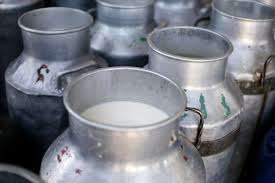
The dairy industry posted strong growth in the first quarter of 2025, collecting 250.6 million litres of milk, an increase of 56 percent compared to the same period in 2024.
This surge positions the country to surpass the one billion-litre mark in annual milk intake for the first time.
Traditionally, milk intake dips during the dry months of January and February. However, the industry defied this pattern, with January recording 90.45 million litres, the highest monthly intake in Kenya’s history, followed by 77.94 million litres in February and 82.22 million litres in March.
“The consistent growth in milk intake, even during typically low-yield months, is a testament to the resilience and adaptability of our dairy farmers,” said Genesio Mugo, Chairman of the Kenya Dairy Board. “Improved logistics, favourable climate conditions, and government interventions have played a crucial role in this achievement.”
ALSO READ: Stakeholders Push for Increased Agricultural Funding at FINAS-2025 Summit
The government’s focus on enhancing dairy productivity includes exploring advanced breeding technologies. Livestock Principal Secretary Jonathan Mueke announced ongoing discussions with ABS Global, an American breeding company, to introduce sexed semen technology in Kenya. This technology increases the likelihood of dairy cows giving birth to heifers, thereby boosting milk production.
“By adopting sexed semen technology, we aim to increase the number of female calves, which are essential for milk production,” Mueke stated. “This initiative is part of our broader strategy to ensure sustained growth in the dairy sector.”
Kenya’s total milk production reached 5.76 billion litres in 2024, with 4.8 billion litres sold without processing. The country aims to increase its dairy exports to Sh9 billion (approximately 69.5 million USD) in 2025, targeting markets in the Middle East, South Sudan, and Somalia.
“We are planning to get certification at the international level so that our milk can access the European Union,” Mugo added. “Processing more milk into products like butter, cheese, ghee, and yoghurt is central to our export strategy.”





